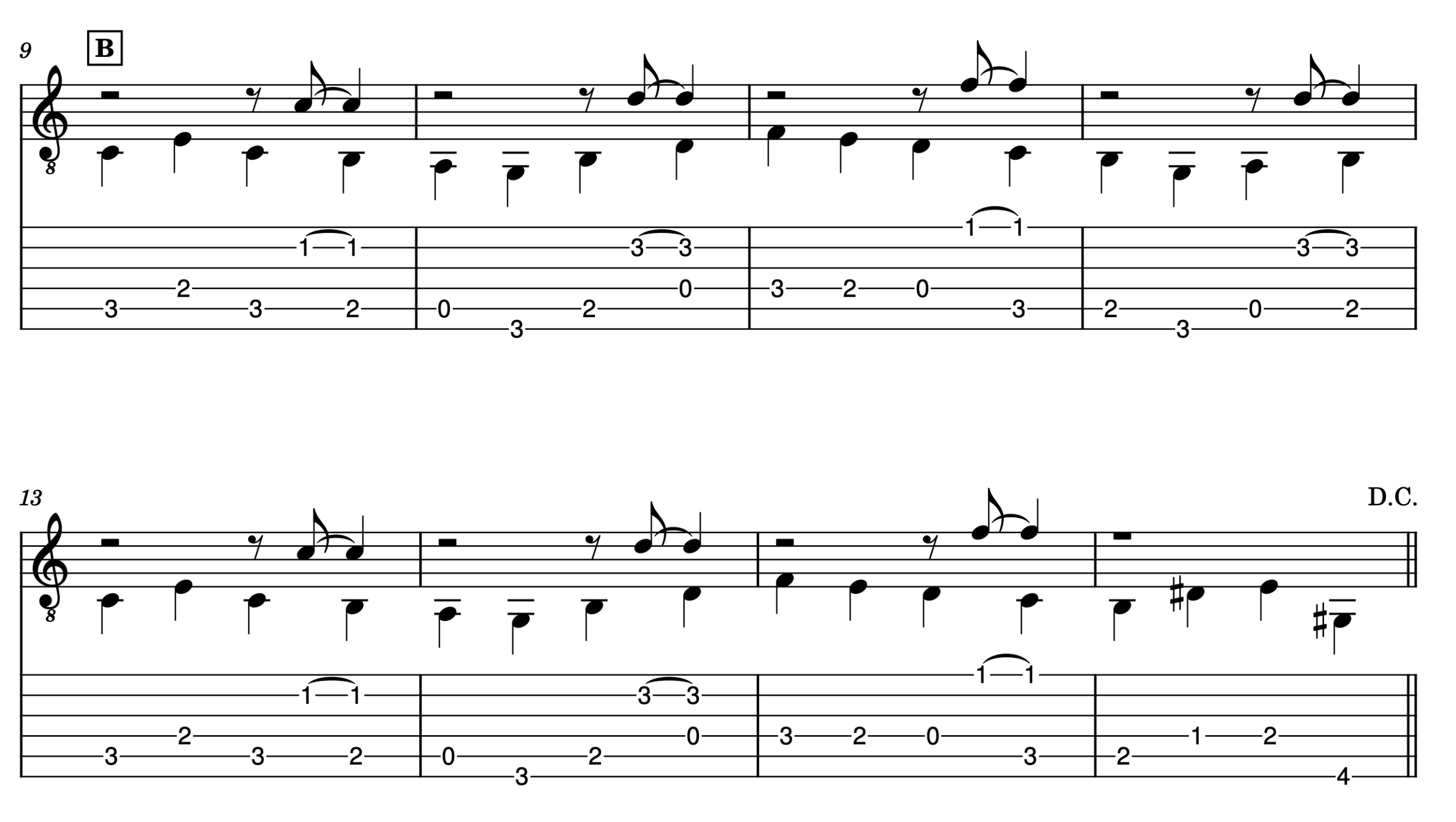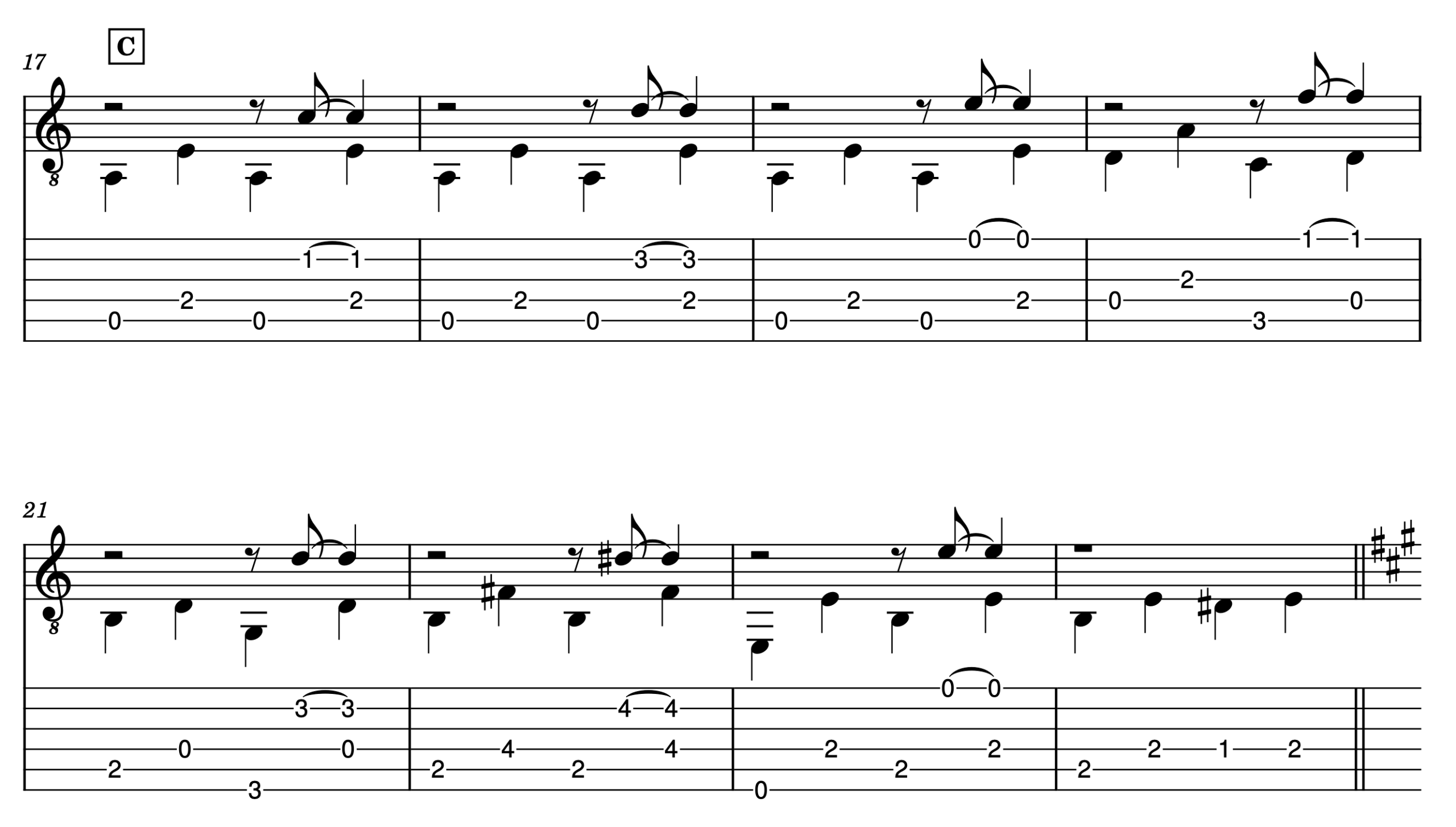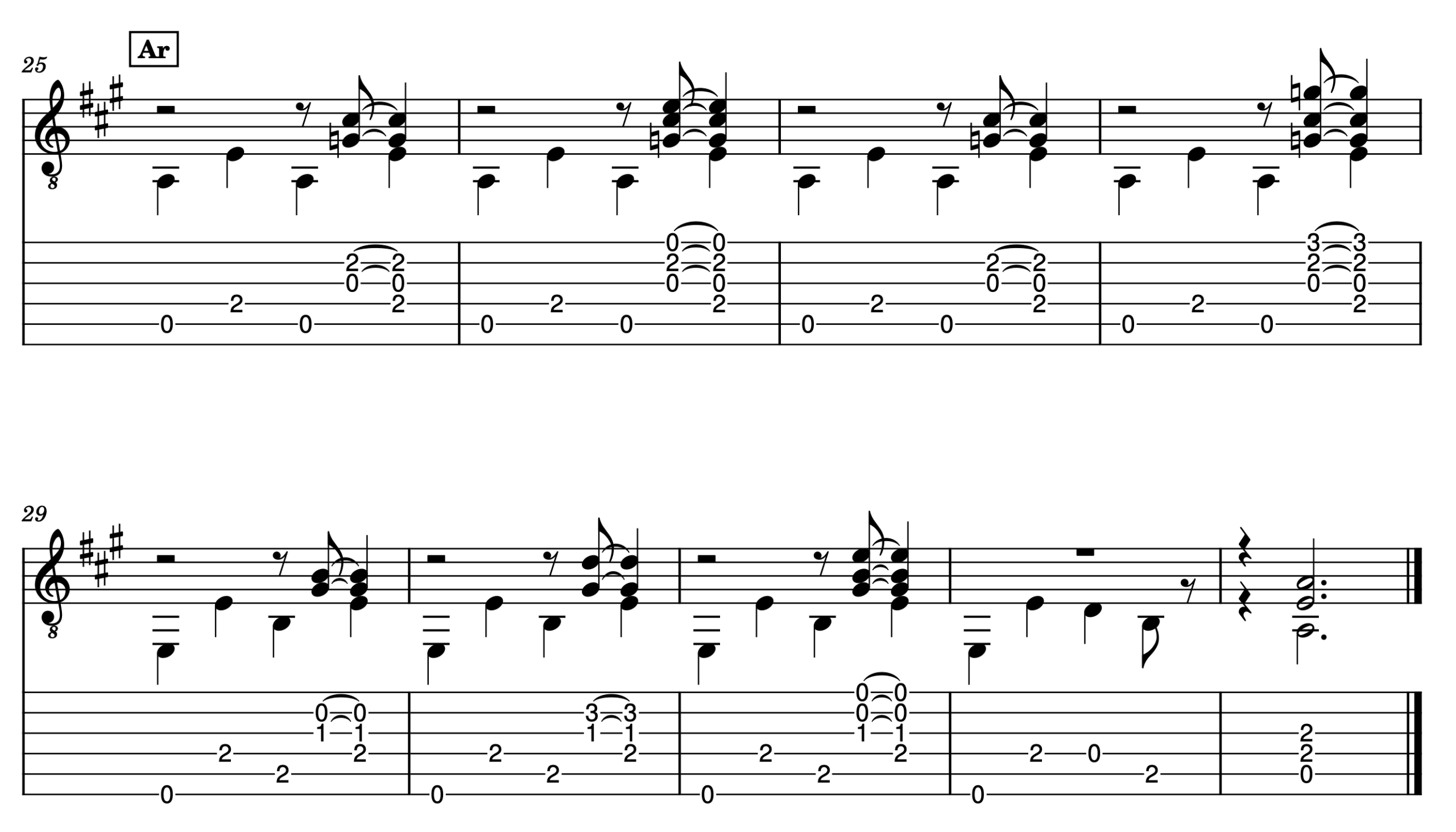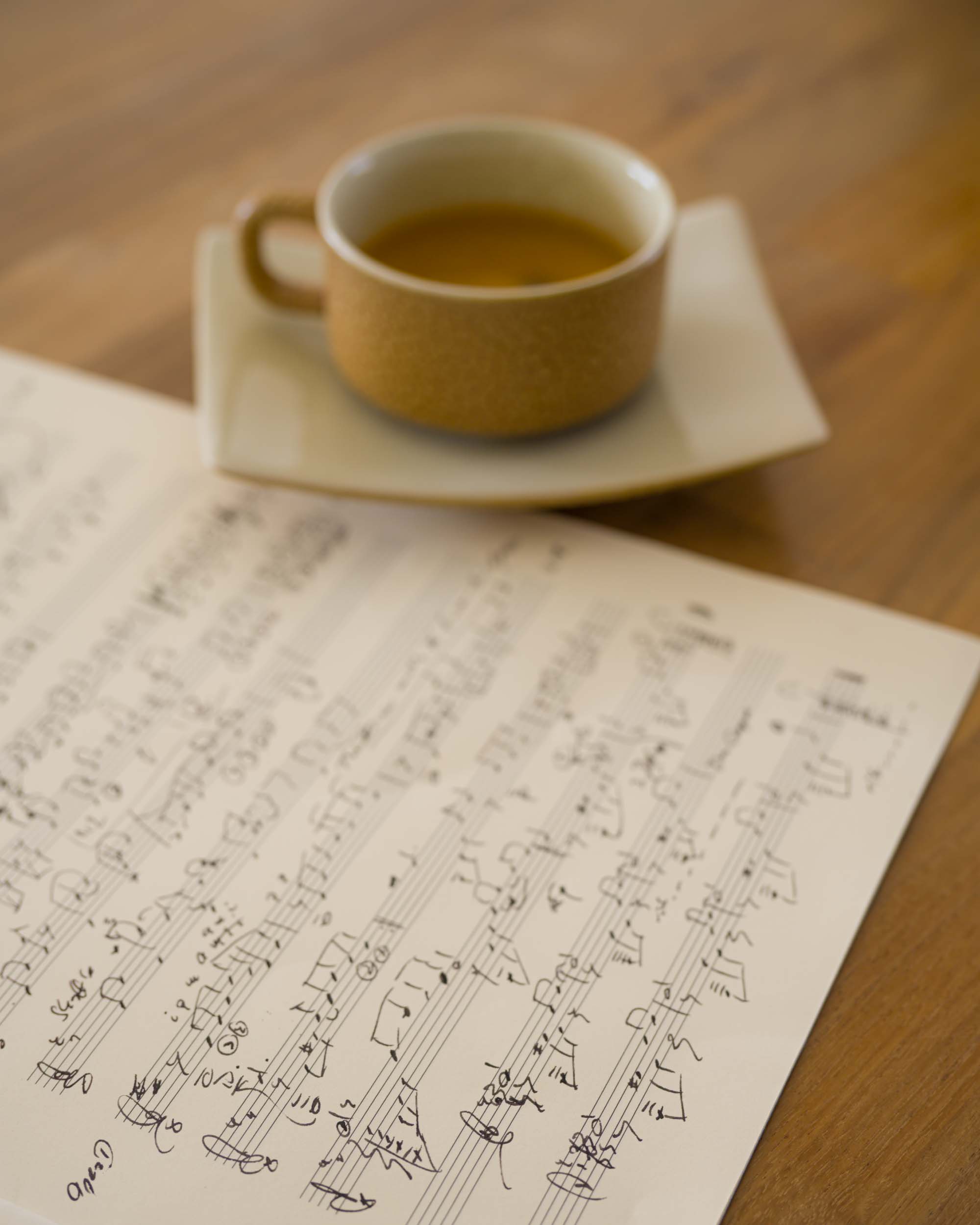Use a small idea to grow
HOW TO WRITE A SIMPLE SONG FOR GUITAR
The Power of Songwriting
Why Songwriting?
Even if you don’t feel inclination to create your own music, having insight of a song helps your playing. It’s the same thing like analysis, but there is a game: ‘what happens if I use this chord?’ ‘What happens if i add a note here or there?’ ‘What if I change the melody?’
It’s all about having a base idea and playing with.
THE STARTING POINT

Changing to the dominant E major chord made the next four bars. In the final measure 8 there is no melody, here the bass leads back to the A major, to repeat those 8 bars.

Finding Your Inspiration
walking bass
This second part is in C major, aided by the B leading note of bar 8. Here the walking bass and the dense chord changes add variety.

The ‘D.C.’ mark at measure 16th means ‘da capo’ (italian) – repeat from the beginning. It is used generally when you have nested repeats. Be careful, it does not means full length repeats. This case the inside repeats (bars 1-8) played only once: A :|| B (D.C) = A A B A B
Create the Bridge section
A minor, please!
The third part introduces the first minor chord of the song, providing a darker/classical feel.
In measures 20-21 a ‘new’ bass type appears – the Alberti bass.

Goin' home
Return and closing
A typical catch is to return home from a harmonic wander (Bridge). Here, the common dominant of A minor and A major (E major) in bars 23-24 provides this opportunity. And, as you gained experience when you’re away from home, the reprise is changing a bit. Here I used intervals and triads instead of a single melody notes, what gives more emphasis on the dissonance between the G and G-sharp notes.

As you may noticed, the structure is very familiar to the standard pop-song: 2 Verses (A), Refrain (B), Verse, Refrain, Bridge (C), Verse.
Variety comes from the three different bass types, the harmonic journey of parts and the tempo of chord changes.
The consistency in other hand provided by the similar 8 bar length of the parts and the one measure long pattern what is used exclusively.
Each part’s last measure serves as “signpost”, where you can repeat a previous material or move forward to the next one.
PLAYING TIPS
Each bars
Play the second quarter note with a bit of accent. Like the snare beats in songs.
Bars 4 & 28
Accent the G melody note and bend slightly towards G sharp.
To Swing or not to Swing?
In the first part (Verse) it doesn’t matter, I like to play it straight here, with the melody note on the eighth.
The 2nd part (Refrain) suits the walking bass very well if the melody note slips swingingly. It’s also worth trying the extreme of playing it on sixteenth.
The contrast of the minor-darker tone of the Bridge is further accentuated if you return to stiff eighths in the rhythm. Here, the bass emphasis can also be more even, with less need to push the second quarter.
And the closing part? I’ll stick with the eighths, loosened up a bit, like a pinch of salt.

